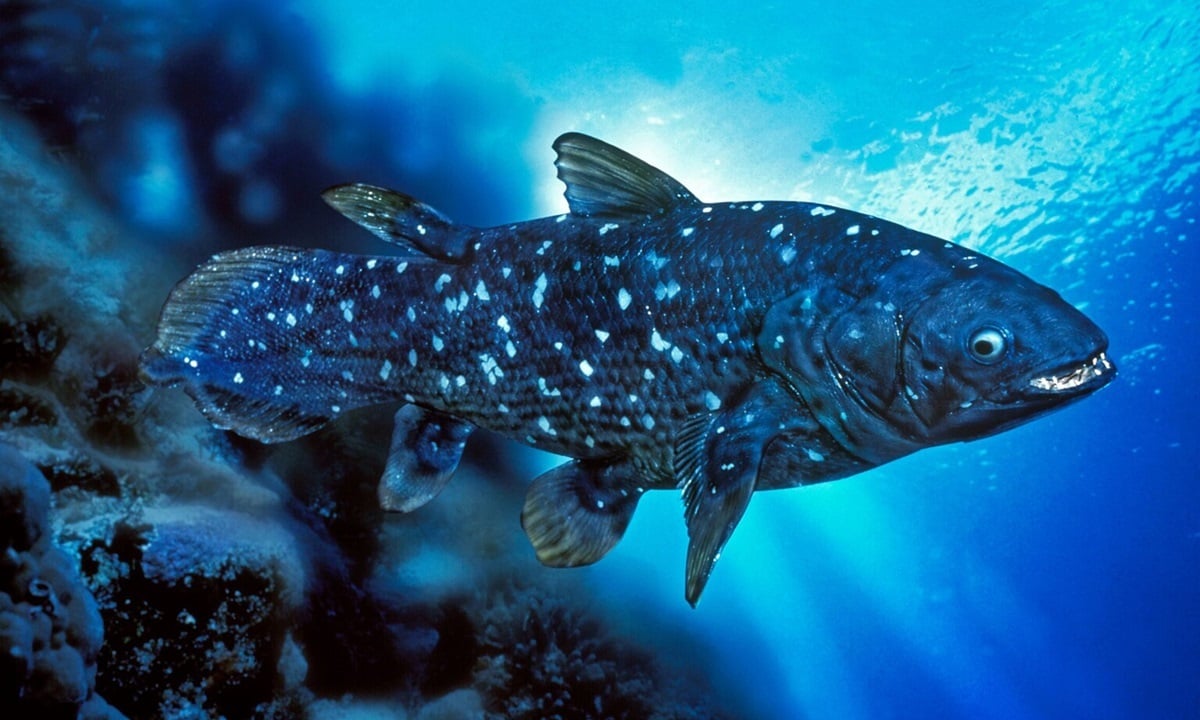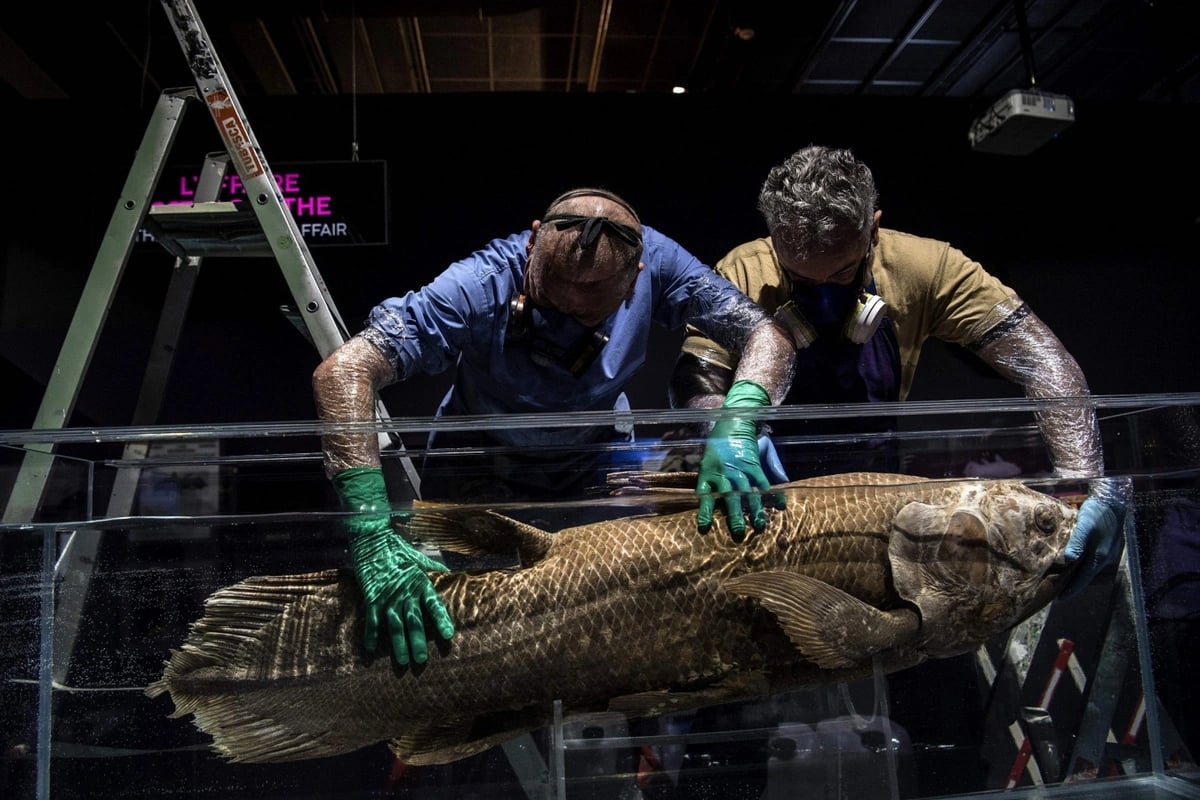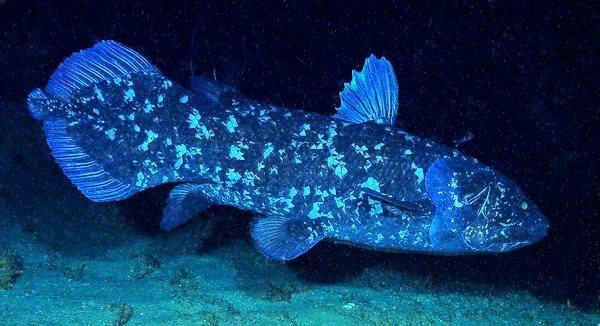This animal can reach nearly 2 meters in length and weigh about 90 kg, living up to 100 years.
In 2021, a population of “four-legged fossil fish” or coelacanths was unexpectedly discovered living and thriving off the coast of Madagascar in the Western Indian Ocean. According to a report from the non-profit environmental conservation organization Mongabay News, fishermen accidentally discovered the species while using a special Gillnet net to catch sharks.
The Gillnet is an improved version that can be lowered to depths of about 150 meters below the surface of the ocean, where the coelacanth normally lives. The reappearance of the fish is not only surprising, but also demonstrates a unique biological phenomenon known as the "Lazarus" phenomenon, when a species thought to have disappeared suddenly reappears.

The coelacanth is an ancient bony fish that lives mainly in deep water. It is about 420 million years old, first appearing in the Devonian period. It can live up to 100 years, grow up to nearly 2 meters long and weigh about 90 kg. It lives mainly at depths of 100–150 meters, hiding in caves during the day and coming out to hunt at night.
The coelacanth's body structure is very unique. It is the only living animal with a joint in its skull, allowing it to grab and swallow larger prey. In addition, its eyes contain "tapetum lucidum" - a reflective substance similar to a cat's eyes - which helps it see well even in low light conditions, increasing its ability to hunt at night.
Recent research has revealed some interesting facts about the biology of the coelacanth. They mature very slowly, with a gestation period of up to five years – the longest of any vertebrate. This discovery suggests that this ancient fish has evolved specifically to adapt to the deep-sea environment. However, with a slow metabolism and a very low natural population, the species is now considered critically endangered.

The fish is also unique in terms of evolution. With its many limb-like fins, the coelacanth is considered a transitional species between fish and tetrapods. Genetic studies have shown that the coelacanth is more closely related to tetrapods than to lungfish. This finding contributes to our understanding of the transition from aquatic to terrestrial environments.
The coelacanth's genome is about 3 billion DNA letters long, about the same size as the human genome. However, the coelacanth's genetic evolution is much slower than that of other fish and land animals. This makes them an ideal model for studying biological evolution in the harsh conditions of the deep sea environment.
In addition to helping decipher the evolution of creatures from water to land, the coelacanth genome also allows researchers to learn more about how its immune and olfactory systems adapted to the terrestrial environment. The discovery of this fish has become an important milestone in clarifying the evolutionary history of vertebrates on Earth.

In fact, fossil records show that the coelacanth disappeared around the same time that the dinosaurs went extinct, leading scientists to believe that they had been extinct for more than 65 million years until the discovery of the West Indian Ocean coelacanth off the coast of South Africa in 1938.
Currently, the coelacanth is classified as critically endangered by the International Union for Conservation of Nature (IUCN), with a very small wild population. Their miraculous survival shows that an ancient fish has survived and evolved in harsh conditions at the bottom of the sea.
Kim Linh (Synthesis)
Source: https://giadinh.suckhoedoisong.vn/loai-vat-tuong-nhu-tuyet-chung-cung-khung-long-tu-65-trieu-nam-truoc-bat-ngo-tai-xuat-tuoi-tho-len-den-ca-the-ky-mang-thai-it-nhat-5-nam-172241114073151663.htm
























![[Photo] National Assembly Chairman attends the seminar "Building and operating an international financial center and recommendations for Vietnam"](https://vphoto.vietnam.vn/thumb/1200x675/vietnam/resource/IMAGE/2025/7/28/76393436936e457db31ec84433289f72)











































































Comment (0)